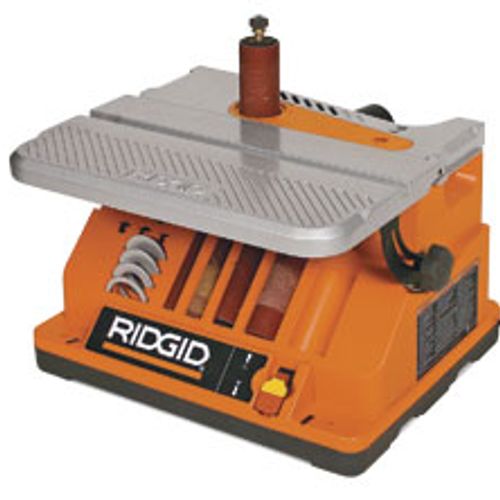Tool Test: Spindle Sanders
Oscillating drums smooth curves quickly and easily
Synopsis: The up-and-down movement of an oscillating spindle sander is ideal for sanding curves. The work goes faster, the abrasive drum lasts longer, and there is less risk of heat buildup. Roland Johnson tested seven spindle sanders ranging in price from $140 to $640. All have the power to sand 8/4 red oak without slowing or stalling. All but one come with at least four spindles, ranging in diameter from 1/4 in. to 2 in. One converts easily from spindle sander to belt sander. In addition to testing for squareness, runout, power, and general comfort and convenience, Johnson offers tips for making accurate cuts; sanding for a uniform, steady curve; using a jig to sand straight edges; and using a tilting table.
Models tested include the Bridgewood OVS-5; Clayton 140; Delta SA350K; Grizzly GO538; Grizzly G9922; Jet JBOS-5; Ridgid EB4424.
Nothing beats an oscillating spindle sander for sanding curves. The up-anddown movement helps keep the sanding sleeve from clogging. Sanding goes faster, the abrasive lasts longer, and there’s less risk of heat buildup.
The seven sanders I tested sell for $140 to $640. They’re compact enough to sit on a workbench, although a couple have a floor stand. One, the Ridgid 4424, has the unique ability to convert quickly from a spindle sander to an oscillating 4×24 belt sander. These machines won’t grind away large amounts of hardwood in no time. However, all have enough power to sand 8/4 red oak without slowing or stalling. I was able to stall the two with the least horsepower, the delta and the Grizzly G0538, but only when they were bolted down and fitted with a 3-in. drum and I pushed hard on the stock. But that kind of aggressive sanding isn’t right for these machines.
Best Overall
Ridgid EB4424 Oscillating Spindle/Belt Sander

Motor speed, oscillations per minute, and spindle stroke vary, but those differences don’t matter. I had no trouble sanding to a line or following a curve with any machine. What does matter are seemingly small things—a place to store sanding sleeves and tools, or a dust port that fits a shop vac without an adapter.
A drum for every curve
Except for the Grizzly G9922, which comes only with a 2-in. sanding drum, these sanders come with at least four spindles, generally ranging in diameter from 1⁄4 in. to 2 in. That range of sizes highlights a real benefit of spindle sanders—the ability to change the drum and the sleeve that fits over it to suit any curve.
Drums smaller than 1⁄2 in. slide onto metal spindles and are secured by a washer on the top or a clamp on the bottom. Those larger than 1⁄2 in. slide onto rubber drums that either fit the 1⁄2-in. spindle or have a spindle of their own. To hold the sanding sleeves in place, you tighten a nut at the end of the spindle, compressing the rubber drum against the sleeve. That’s easiest on the Ridgid, which doesn’t require tools. It’s outfitted with knobs for drum changes, table tilting, and conversion from belt- to spindle-sanding mode.
Few things aggravate me more than hunting for the wrenches or parts I need to change spindles or sanding drums. The delta, the Grizzly G0538, and the Ridgid are the handiest; they store spindles, spare drums, and tools on their bases. The Jet is nearly as good; it holds spare spindles, sanding drums, and table inserts, but not tools. The Clayton has a separate rack for spindles, but no tools. The Bridgewood and the Grizzly G9922 don’t provide storage.
From Fine Woodworking #188























Log in or create an account to post a comment.
Sign up Log in